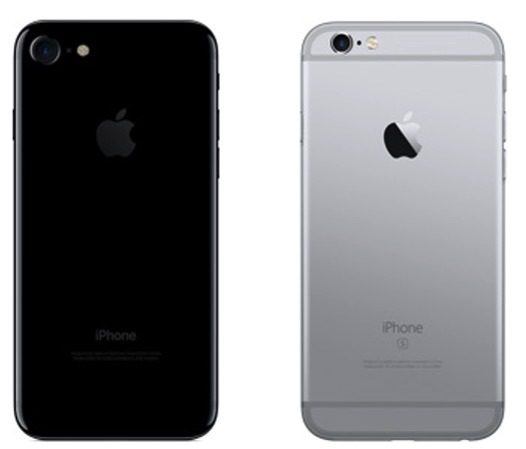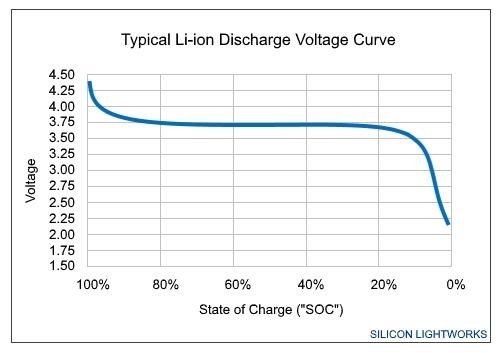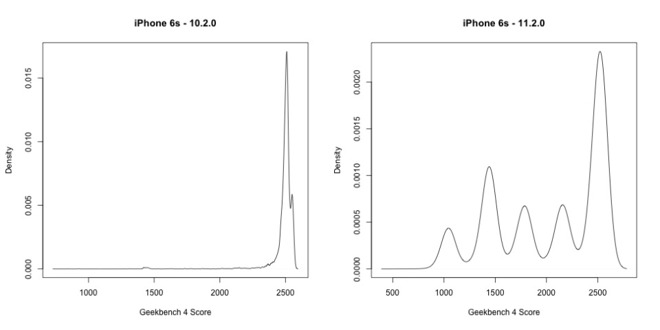 3978
3978
 2018-01-03
2018-01-03
Lithium-ion batteries such as those found in nearly every smartphone and tablet are not little, indestructable homogenous power reactors. AppleInsider delves briefly into the construction and chemistry of them, and discusses how an old battery works against not only device manufacturers, but the users themselves.

A battery is a physical and chemical process, and isn't eternal
First, some science 101.
Any battery stores electrical energy in the form of chemical energy, and can convert that energy into electricity. A battery requires an anode and cathode, separated by electrolyte that allows the flow of electrical charge between the cathode and anode.
The better and more regulated the charging and discharging of the cell is, the longer the battery will live. The more temperature excursions the battery endures, like leaving it in a hot car, or outside in freezing temperatures, the shorter the life of the battery will be.
The output voltage of any given battery over a discharge cycle can be plotted over percent charge.

Damage to the cell from the environment, faulty charging gear providing more than allowable voltage, or other issues permanently increases the steepness of the voltage drop while the battery is being used. Operating temperature has a temporary increase in steepness as well, with low temperature having more of an impact on capacity than high.
A "dead" battery, really isn't
Just because your battery is "dead" doesn't mean that it doesn't have any stored power. This is evidenced by Apple popping up a "plug in" graphic when you try to start a phone with a drained battery.
In the case of a lithium-ion battery, the battery must have more than 2V capacity, or the electrode starts to oxidize. This happens fairly quickly and cannot be reversed by recharging. This is why a lithium-ion battery left idle for a period of time ultimately completely dies, or has next to no capacity.
In all likelihood, the reports of the Samsung Note 8 shutting down and not coming back to life after a drained battery are because the device is below the power that it can kick-start the charging circuitry, and not permanent damage to the battery.
If a lithium-ion battery is compromised by overcharge, overheating, damage, or simply age, the inner cells can "outgas" the contained flammable electrolyte mixture. An undamaged battery membrane will stretch and bulge to contain this material to some extent, but at some point the membrane will rupture explosively —as practically demonstrated by the fires caused by the Galaxy Note 7 in 2016.
How we got here
Mobile processors don't consume a set amount of power. They draw more volts depending on how hard they are being worked.
Benchmarking applications are designed to run a processor for as long as it can, as hard as it can to complete a calculation, or do a series of them in an set period of time. This will invariably engage any voltage-related down-clock routine as the processor is slammed by the testing —and it is how Apple's specific method of fixing the random shut-down problem in a voltage-constrained situation was discovered first on Reddit, and then by Geekbench curator John Poole.

It isn't clear how many users actually experienced or noticed the slow-downs, but the random shut-downs before iOS 10.2.1 were certainly noticeable. According to Apple, the slow-downs aren't permanent, and are only invoked with the situation demands it. A battery less chemically depleted will down-clock less often, and a user not pushing the device hard may never see it, even with a near-defunct battery.
There are two different situations surrounding Apple's batteries in the iPhone 6s, and they are unrelated. The first is the battery replacement program that Apple executed for a batch of batteries installed in select iPhone 6s units. In that case, the battery had known manufacturing issues, and Apple replaced them free of charge to owners of the afflicted serial number range.
The second is the shutdown fix it implemented in Feb. 2017 with the release of iOS 10.2.1. What it did was temporarily down-clock the CPU in the phone, to keep the device's voltage demand less than the critical voltage where the phone would shut down seemingly at random. The iOS 10.2.1 is often conflated with the recalled batch of batteries for the iPhone 6s, when in reality, they have nothing in common.
To fix the problem, Apple was less transparent than it should have been, perhaps, in its very brief release notes saying that it had fixed the random shutdown problem. The aforementioned Nexus 6P that looks to be having the same low-voltage problem probably won't get a patch preventing the random crashes.
But, no matter how much money Apple makes, it can't escape the laws of physics, nor the reality of chemistry.
Source: appleinsider